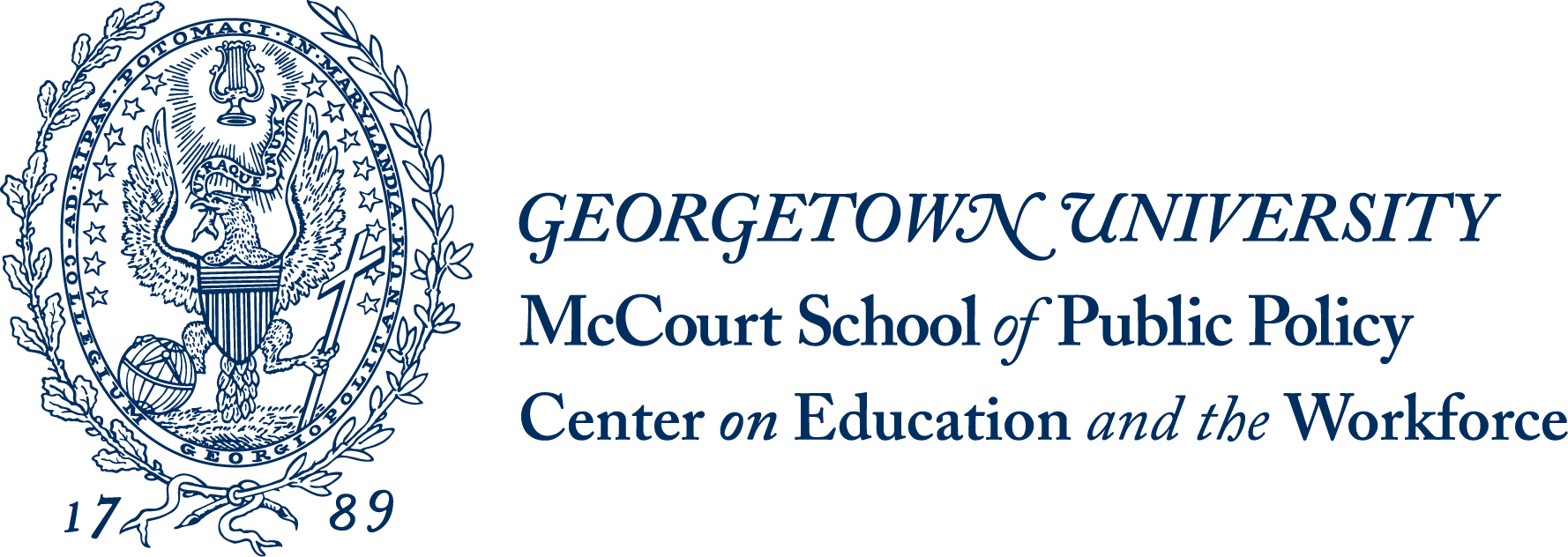- Mar 11, 2015
- 76,882
- 33,903
- 2,330
Simply put, there is no black favoritism.
Under SAT-Only Admissions, Asian American Applicants to Selective Colleges Would Gain Fewer than 3,000 Seats Out of 120,000, Georgetown University Report Finds
A new report from the Georgetown University Center on Education and the Workforce (CEW) finds no strong evidence of discrimination against Asian American applicants in admissions to highly selective colleges. Selective Bias: Asian Americans, Test Scores, and Holistic Admissions evaluates the common arguments made by affirmative action critics and Students for Fair Admissions, which is suing Harvard University and has lawsuits pending against the University of North Carolina and the University of Texas at Austin over their admissions practices.
Asian American applicants face lower acceptance rates at highly selective colleges compared to other racial and ethnic groups, but they are also much more likely to apply regardless of test scores. Even if standardized test scores were the only factor considered in admissions, the Asian American share of enrollment at selective colleges would increase by no more than 2 percentage points. The data do not support the claim that selective colleges adjust the number of Asian American students they admit to maintain a long-term racial balance of students.
“If we used test-based merit as the singular admissions requirement, the gain for Asian American applicants would be marginal,” CEW Director and lead author Anthony P. Carnevale said. “But on the flip side, 21% of Asian American applicants who were previously admitted would no longer qualify.”

 www.globenewswire.com
www.globenewswire.com
Selective Bias: Asian Americans, Test Scores, and Holistic Admissions evaluates the common arguments made by affirmative action critics and Students for Fair Admissions, which is suing Harvard University and has lawsuits pending against the University of North Carolina and the University of Texas at Austin over their admissions practices. The report finds no strong evidence of discrimination against Asian American applicants in admissions to highly selective colleges.
Critics claim that if colleges considered only academic merit, Asian American applicants would gain a greater number of seats. SFFA and other affirmative action critics often base their allegations on three factors:
The enrollment share of Asian American and Pacific Islander students at Harvard and at the 90 other most selective colleges has kept pace with their growing share of the four-year college-going population. In fact, the Asian American and Pacific Islander share of enrollments at the most selective colleges grew by 4 percentage points even while their enrollment share at all four-year colleges grew by just 2 percentage points between 1999 and 2018.
Among students who scored 1300 or above on the SAT, 65% of Asian American students applied to one of the most selective colleges in the country, compared to 50% of non–Asian American students. And among students who scored below 1300, 12% of Asian American students took a chance and applied to one of the most selective colleges, compared to only 5% of non–Asian American students. Since more Asian American students apply to selective colleges, they are more likely to be denied a seat, which is not evidence of bias.
(Let's stop right here. Asians are applying to schoools they would not qualify for based on SAT scores and people are talking about discrimination against Asians and black favoritism.)

 cew.georgetown.edu
cew.georgetown.edu
There is no black favoritism.
The only way to create a color-blind society is to adopt color-blind policies.
Although this assertion sounds intuitively plausible, the reality is that color-blind policies often put racial minorities at a disadvantage. For instance, all else being equal, color-blind seniority systems tend to protect White workers against job layoffs, because senior employees are usually White (Ezorsky, 1991). Likewise, color-blind college admissions favor White students because of their earlier educational advantages. Unless pre-existing inequities are corrected or otherwise taken into account, color-blind policies do not correct racial injustice—they reinforce it.
Affirmative action may have been necessary 30 years ago, but the playing field is fairly level today.
Despite the progress that has been made, the playing field is far from level. Women continue to earn 70 cents for every male dollar. Black people continue to have twice the unemployment rate of White people, half the median family income, and half the proportion who attend four years or more of college. In fact, without affirmative action the percentage of Black students on many campuses would drop below 2%. This would effectively choke off Black access to higher education and severely restrict progress toward racial equality.
A large percentage of White workers will lose out if affirmative action is continued.
Government statistics do not support this myth. According to the Commerce Department, there are fewer than 2 million unemployed Black civilians and more than 100 million employed White civilians (U.S. Bureau of the Census, 1994). Thus, even if every unemployed Black worker were to displace a White worker, less than 2 percent of Whites would be affected. Furthermore, affirmative action pertains only to job-qualified applicants, so the actual percentage of affected Whites would be a fraction of 1 percent. The main sources of job loss among White workers have to do with factory relocations and labor contracting outside the United States, computerization and automation, and corporate downsizing (Ivins, 1995).
If Jewish and Asian Americans can rapidly advance economically, African Americans should be able to do the same.
This comparison ignores the unique history of discrimination against Black people in America. As historian Roger Wilkins has pointed out, Blacks have a 375-year history on this continent: 245 involving slavery, 100 involving legalized discrimination, and only 30 involving anything else (Wilkins, 1995). Jews and Asians, on the other hand, have immigrated to North America—often as doctors, lawyers, professors, entrepreneurs, and so forth. Moreover, European Jews are able to function as part of the White majority. To expect Blacks to show the same upward mobility as Jews and Asians is to deny the historical and social reality that Black people face.
You can't cure discrimination with discrimination.
The problem with this myth is that it uses the same word—discrimination—to describe two very different things. Job discrimination is grounded in prejudice and exclusion, whereas affirmative action is an effort to overcome prejudicial treatment through inclusion. The most effective way to cure society of exclusionary practices is to make special efforts at inclusion, which is exactly what affirmative action does.
Affirmative action is nothing more than an attempt at social engineering by liberal Democrats.
In truth, affirmative action programs have spanned seven different presidential administrations—four Republican and three Democratic. Although the originating document of affirmative action was President Johnson's Executive Order 11246, the policy was significantly expanded in 1969 by President Nixon and then Secretary of Labor George Schultz. President Bush also enthusiastically signed the Civil Rights Act of 1991, which formally endorsed the principle of affirmative action. Thus, despite the current split along party lines, affirmative action has traditionally enjoyed the support of Republicans as well as Democrats.
Myth #10: Support for affirmative action means support for preferential selection procedures that favor unqualified candidates over qualified candidates.
Actually, most supporters of affirmative action oppose this type of preferential selection. Preferential selection procedures can be ordered along the following continuum:
Selection among equally qualified candidates.
Selection among comparable candidates
Selection among unequal candidates.
Selection among qualified and unqualified candidates. The strongest form of preferential selection occurs when unqualified female or minority members are chosen over other candidates who are qualified. Although affirmative action is sometimes mistakenly equated with this form of preferential treatment, federal regulations explicitly prohibit affirmative action programs in which unqualified or unneeded employees are hired.
There is no black favoritism. The claim is a hoax used to race bait.
Under SAT-Only Admissions, Asian American Applicants to Selective Colleges Would Gain Fewer than 3,000 Seats Out of 120,000, Georgetown University Report Finds
21% of Asian American students at the most selective colleges would not have been admitted under a test-only admissions policy
A new report from the Georgetown University Center on Education and the Workforce (CEW) finds no strong evidence of discrimination against Asian American applicants in admissions to highly selective colleges. Selective Bias: Asian Americans, Test Scores, and Holistic Admissions evaluates the common arguments made by affirmative action critics and Students for Fair Admissions, which is suing Harvard University and has lawsuits pending against the University of North Carolina and the University of Texas at Austin over their admissions practices.
Asian American applicants face lower acceptance rates at highly selective colleges compared to other racial and ethnic groups, but they are also much more likely to apply regardless of test scores. Even if standardized test scores were the only factor considered in admissions, the Asian American share of enrollment at selective colleges would increase by no more than 2 percentage points. The data do not support the claim that selective colleges adjust the number of Asian American students they admit to maintain a long-term racial balance of students.
“If we used test-based merit as the singular admissions requirement, the gain for Asian American applicants would be marginal,” CEW Director and lead author Anthony P. Carnevale said. “But on the flip side, 21% of Asian American applicants who were previously admitted would no longer qualify.”
Under SAT-Only Admissions, Asian American Applicants to Selective Colleges Would Gain Fewer than 3,000 Seats Out of 120,000, Georgetown University Report Finds
21% of Asian American students at the most selective colleges would not have been admitted under a test-only admissions policy...
Summary
Selective Bias: Asian Americans, Test Scores, and Holistic Admissions evaluates the common arguments made by affirmative action critics and Students for Fair Admissions, which is suing Harvard University and has lawsuits pending against the University of North Carolina and the University of Texas at Austin over their admissions practices. The report finds no strong evidence of discrimination against Asian American applicants in admissions to highly selective colleges.
Court Cases Allege That Asian American Applicants are Held to an Unfair Standard
Critics claim that if colleges considered only academic merit, Asian American applicants would gain a greater number of seats. SFFA and other affirmative action critics often base their allegations on three factors:
- stagnant enrollment shares for Asian American students
- relatively low acceptance rates of Asian American applicants
- differences in SAT scores between Asian American and non–Asian American students at the most selective colleges.
The Asian American Enrollment Share at the Most Selective Colleges Has Remained Stable Over the Past Decade
The enrollment share of Asian American and Pacific Islander students at Harvard and at the 90 other most selective colleges has kept pace with their growing share of the four-year college-going population. In fact, the Asian American and Pacific Islander share of enrollments at the most selective colleges grew by 4 percentage points even while their enrollment share at all four-year colleges grew by just 2 percentage points between 1999 and 2018.
Asian American Students are More Likely to Apply to Highly Selective Colleges Regardless of Test Scores
Among students who scored 1300 or above on the SAT, 65% of Asian American students applied to one of the most selective colleges in the country, compared to 50% of non–Asian American students. And among students who scored below 1300, 12% of Asian American students took a chance and applied to one of the most selective colleges, compared to only 5% of non–Asian American students. Since more Asian American students apply to selective colleges, they are more likely to be denied a seat, which is not evidence of bias.
(Let's stop right here. Asians are applying to schoools they would not qualify for based on SAT scores and people are talking about discrimination against Asians and black favoritism.)

Selective Bias: Asian Americans, Test Scores, and Holistic Admissions - CEW Georgetown
There’s no strong evidence of discrimination against Asian American applicants in admissions to highly selective colleges.
 cew.georgetown.edu
cew.georgetown.edu
There is no black favoritism.
MYTHS ABOUT AFFIRMATIVE ACTION
The only way to create a color-blind society is to adopt color-blind policies.
Although this assertion sounds intuitively plausible, the reality is that color-blind policies often put racial minorities at a disadvantage. For instance, all else being equal, color-blind seniority systems tend to protect White workers against job layoffs, because senior employees are usually White (Ezorsky, 1991). Likewise, color-blind college admissions favor White students because of their earlier educational advantages. Unless pre-existing inequities are corrected or otherwise taken into account, color-blind policies do not correct racial injustice—they reinforce it.
Affirmative action may have been necessary 30 years ago, but the playing field is fairly level today.
Despite the progress that has been made, the playing field is far from level. Women continue to earn 70 cents for every male dollar. Black people continue to have twice the unemployment rate of White people, half the median family income, and half the proportion who attend four years or more of college. In fact, without affirmative action the percentage of Black students on many campuses would drop below 2%. This would effectively choke off Black access to higher education and severely restrict progress toward racial equality.
A large percentage of White workers will lose out if affirmative action is continued.
Government statistics do not support this myth. According to the Commerce Department, there are fewer than 2 million unemployed Black civilians and more than 100 million employed White civilians (U.S. Bureau of the Census, 1994). Thus, even if every unemployed Black worker were to displace a White worker, less than 2 percent of Whites would be affected. Furthermore, affirmative action pertains only to job-qualified applicants, so the actual percentage of affected Whites would be a fraction of 1 percent. The main sources of job loss among White workers have to do with factory relocations and labor contracting outside the United States, computerization and automation, and corporate downsizing (Ivins, 1995).
If Jewish and Asian Americans can rapidly advance economically, African Americans should be able to do the same.
This comparison ignores the unique history of discrimination against Black people in America. As historian Roger Wilkins has pointed out, Blacks have a 375-year history on this continent: 245 involving slavery, 100 involving legalized discrimination, and only 30 involving anything else (Wilkins, 1995). Jews and Asians, on the other hand, have immigrated to North America—often as doctors, lawyers, professors, entrepreneurs, and so forth. Moreover, European Jews are able to function as part of the White majority. To expect Blacks to show the same upward mobility as Jews and Asians is to deny the historical and social reality that Black people face.
You can't cure discrimination with discrimination.
The problem with this myth is that it uses the same word—discrimination—to describe two very different things. Job discrimination is grounded in prejudice and exclusion, whereas affirmative action is an effort to overcome prejudicial treatment through inclusion. The most effective way to cure society of exclusionary practices is to make special efforts at inclusion, which is exactly what affirmative action does.
Affirmative action is nothing more than an attempt at social engineering by liberal Democrats.
In truth, affirmative action programs have spanned seven different presidential administrations—four Republican and three Democratic. Although the originating document of affirmative action was President Johnson's Executive Order 11246, the policy was significantly expanded in 1969 by President Nixon and then Secretary of Labor George Schultz. President Bush also enthusiastically signed the Civil Rights Act of 1991, which formally endorsed the principle of affirmative action. Thus, despite the current split along party lines, affirmative action has traditionally enjoyed the support of Republicans as well as Democrats.
Myth #10: Support for affirmative action means support for preferential selection procedures that favor unqualified candidates over qualified candidates.
Actually, most supporters of affirmative action oppose this type of preferential selection. Preferential selection procedures can be ordered along the following continuum:
Selection among equally qualified candidates.
Selection among comparable candidates
Selection among unequal candidates.
Selection among qualified and unqualified candidates. The strongest form of preferential selection occurs when unqualified female or minority members are chosen over other candidates who are qualified. Although affirmative action is sometimes mistakenly equated with this form of preferential treatment, federal regulations explicitly prohibit affirmative action programs in which unqualified or unneeded employees are hired.
There is no black favoritism. The claim is a hoax used to race bait.







